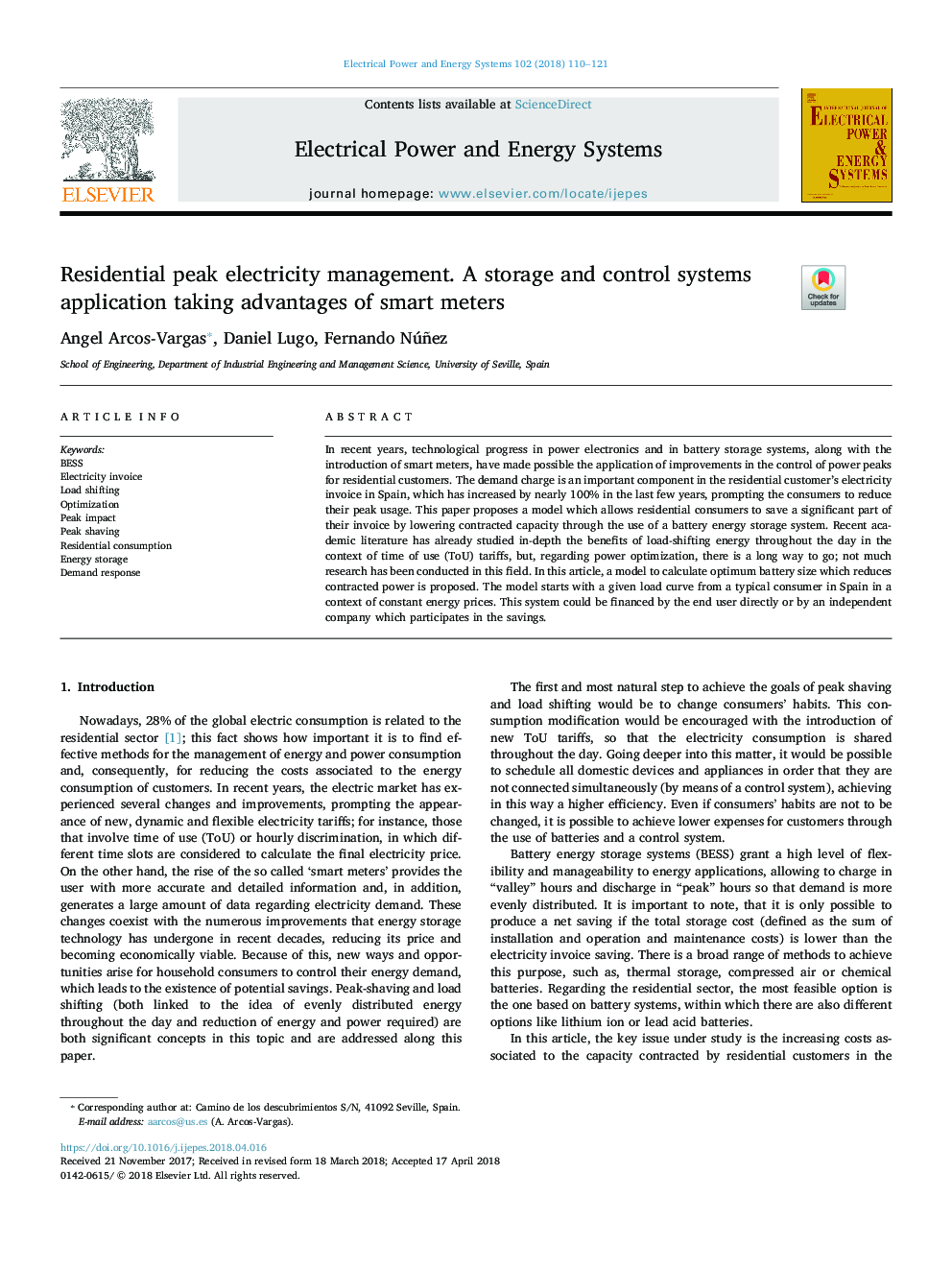| Article ID | Journal | Published Year | Pages | File Type |
|---|---|---|---|---|
| 6859188 | International Journal of Electrical Power & Energy Systems | 2018 | 12 Pages |
Abstract
In recent years, technological progress in power electronics and in battery storage systems, along with the introduction of smart meters, have made possible the application of improvements in the control of power peaks for residential customers. The demand charge is an important component in the residential customer's electricity invoice in Spain, which has increased by nearly 100% in the last few years, prompting the consumers to reduce their peak usage. This paper proposes a model which allows residential consumers to save a significant part of their invoice by lowering contracted capacity through the use of a battery energy storage system. Recent academic literature has already studied in-depth the benefits of load-shifting energy throughout the day in the context of time of use (ToU) tariffs, but, regarding power optimization, there is a long way to go; not much research has been conducted in this field. In this article, a model to calculate optimum battery size which reduces contracted power is proposed. The model starts with a given load curve from a typical consumer in Spain in a context of constant energy prices. This system could be financed by the end user directly or by an independent company which participates in the savings.
Keywords
Related Topics
Physical Sciences and Engineering
Computer Science
Artificial Intelligence
Authors
Angel Arcos-Vargas, Daniel Lugo, Fernando Núñez,
